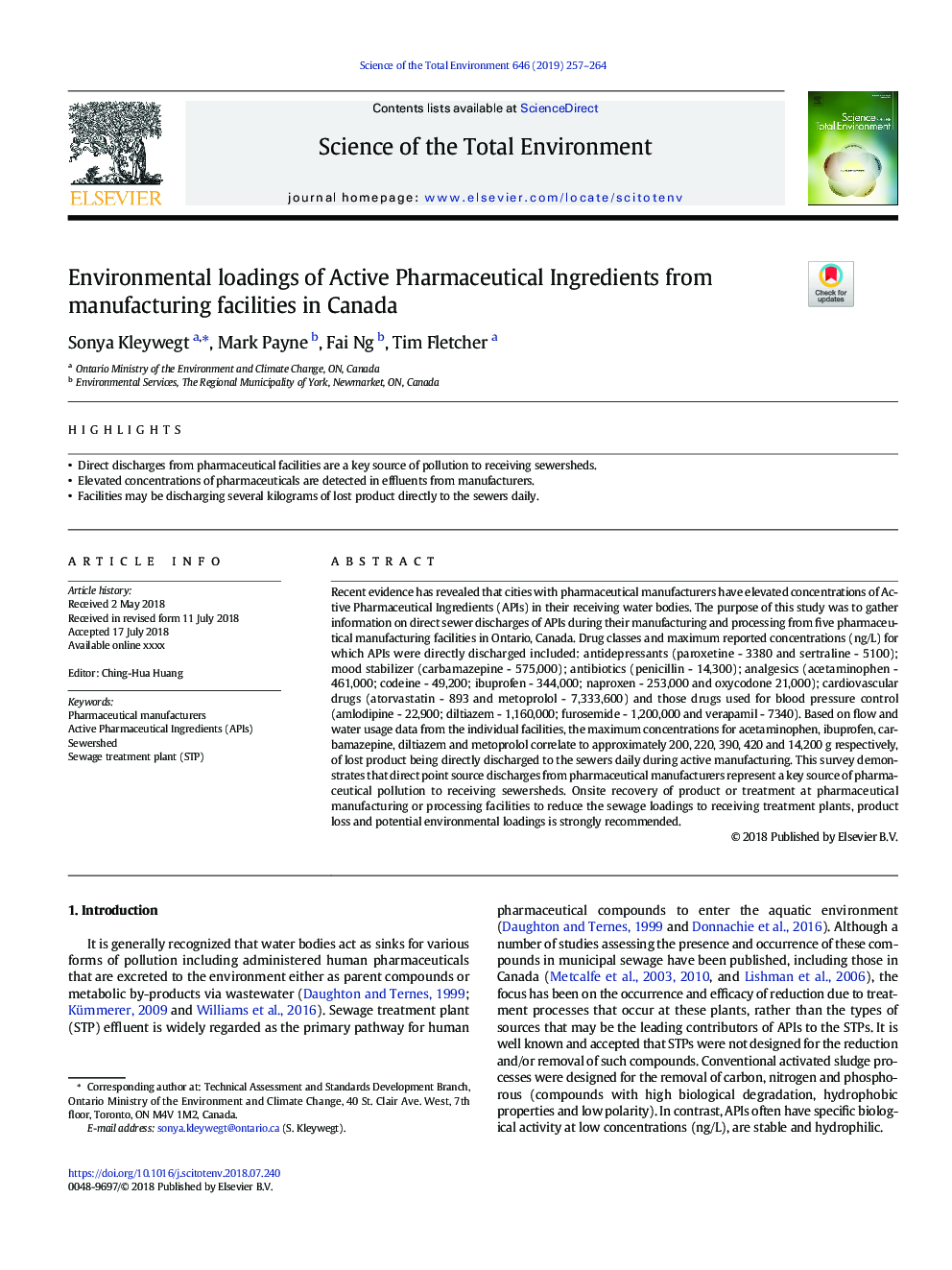| Article ID | Journal | Published Year | Pages | File Type |
|---|---|---|---|---|
| 8858372 | Science of The Total Environment | 2019 | 8 Pages |
Abstract
Recent evidence has revealed that cities with pharmaceutical manufacturers have elevated concentrations of Active Pharmaceutical Ingredients (APIs) in their receiving water bodies. The purpose of this study was to gather information on direct sewer discharges of APIs during their manufacturing and processing from five pharmaceutical manufacturing facilities in Ontario, Canada. Drug classes and maximum reported concentrations (ng/L) for which APIs were directly discharged included: antidepressants (paroxetine - 3380 and sertraline - 5100); mood stabilizer (carbamazepine - 575,000); antibiotics (penicillin - 14,300); analgesics (acetaminophen - 461,000; codeine - 49,200; ibuprofen - 344,000; naproxen - 253,000 and oxycodone 21,000); cardiovascular drugs (atorvastatin - 893 and metoprolol - 7,333,600) and those drugs used for blood pressure control (amlodipine - 22,900; diltiazem - 1,160,000; furosemide - 1,200,000 and verapamil - 7340). Based on flow and water usage data from the individual facilities, the maximum concentrations for acetaminophen, ibuprofen, carbamazepine, diltiazem and metoprolol correlate to approximately 200, 220, 390, 420 and 14,200â¯g respectively, of lost product being directly discharged to the sewers daily during active manufacturing. This survey demonstrates that direct point source discharges from pharmaceutical manufacturers represent a key source of pharmaceutical pollution to receiving sewersheds. Onsite recovery of product or treatment at pharmaceutical manufacturing or processing facilities to reduce the sewage loadings to receiving treatment plants, product loss and potential environmental loadings is strongly recommended.
Keywords
Related Topics
Life Sciences
Environmental Science
Environmental Chemistry
Authors
Sonya Kleywegt, Mark Payne, Fai Ng, Tim Fletcher,
